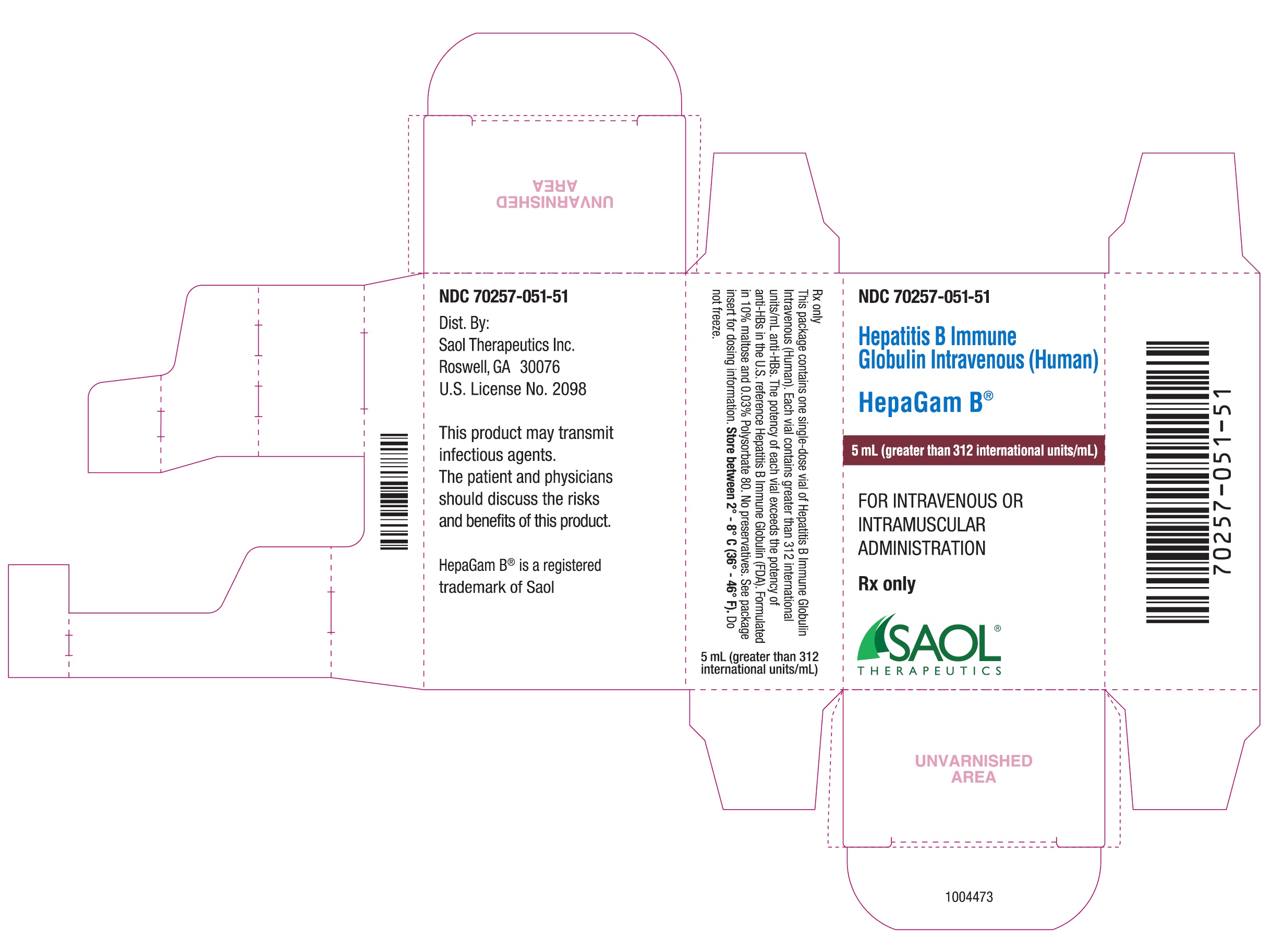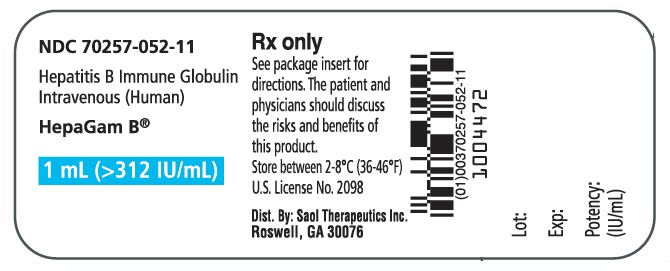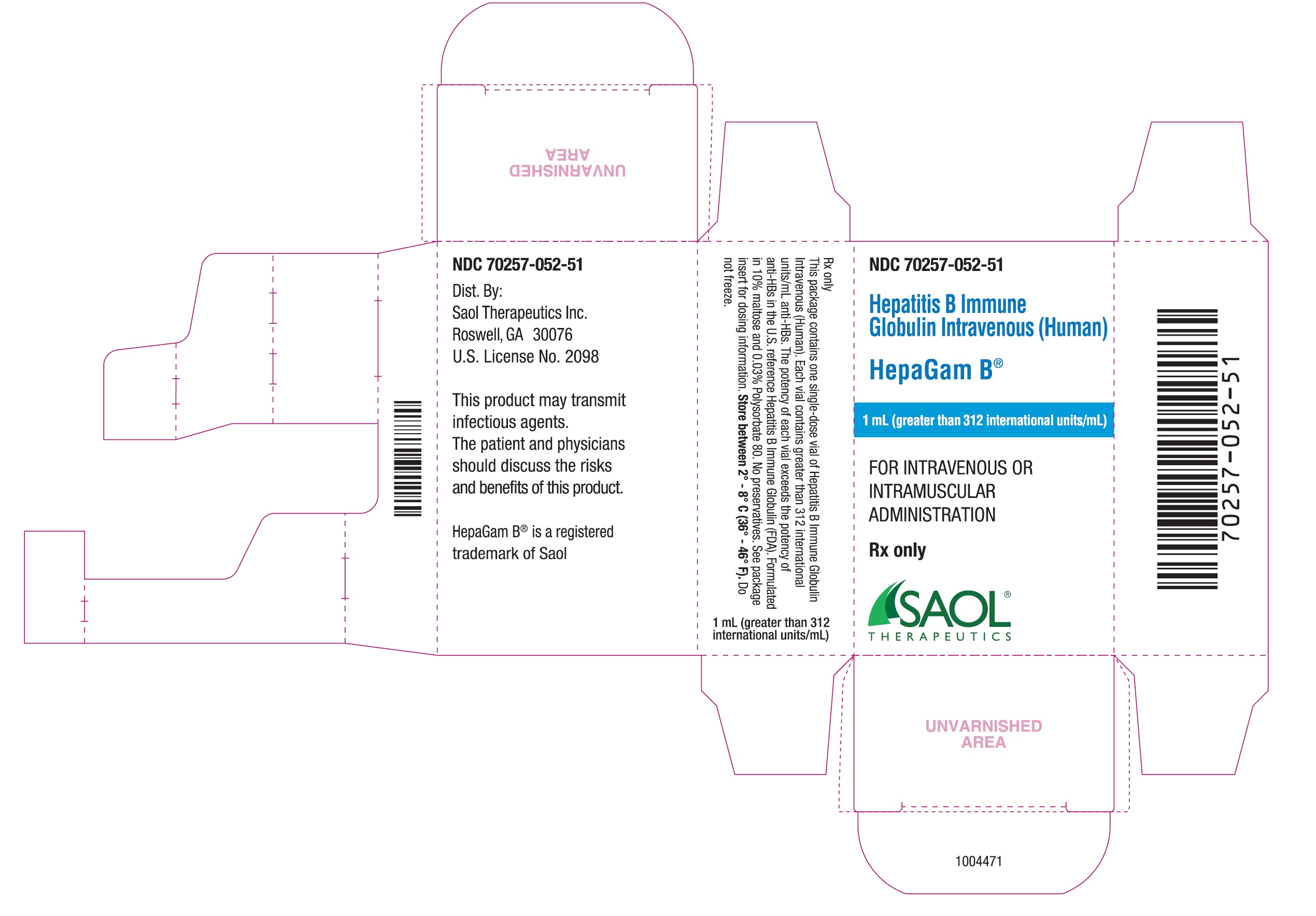Hepagam B | Hepatitis B Immune Globulin Intravenous (human) Injection while Breastfeeding

What is Hepagam B | Hepatitis B Immune Globulin Intravenous (human) Injection used for?
Is using Hepagam B | Hepatitis B Immune Globulin Intravenous (human) Injection safe or dangerous while breastfeeding?

8.3 Nursing Mothers It is not known whether HepaGam B is excreted in human milk. Because many drugs are excreted in human milk, caution should be exercised when HepaGam B is administered to a nursing mother.
Hepagam B | Hepatitis B Immune Globulin Intravenous (human) Injection Breastfeeding Analsys
Human hepatitis b virus immune globulin while Breastfeeding
SafeThe secretion of immunoglobulin into breast milk may help to transfer passive immunitation to the child.
Hepagam B | Hepatitis B Immune Globulin Intravenous (human) Injection Breastfeeding Analsys - 2
Human hepatitis b virus immune globulin while Breastfeeding
CAS Number: 373609-41-7

Hepatitis B immune globulin is an immune globulin (IgG) rich in IgG antibodies against hepatis B. IgG is a normal component of breastmilk. No special precautions are required during breastfeeding. Hepatitis B immune globulin is recommended along with hepatitis B vaccine to be given to infants of mothers who are positive for hepatitis B surface antigen. No differences exist in infection rates between breast-fed and formula-fed infants born to hepatitis B-infected women, as long as the infant receives these preventative measures at birth. Mothers with hepatitis B are encouraged to breastfeed their infants after their infants receive these preventative measures.[1][2] Holder pasteurization (62.5 degrees C for 30 minutes) decreases the concentration of endogenous immunoglobulin G by up to 79%.[3][4] Higher temperatures of 72 and 85 degrees C appear to cause greater loss, but further lyophylization does not cause marked additional loss.[5] A flash heating pasteurization reduced the concentration of endogenous immunoglobulin G by 33%.[6] A continuous flow, high-temperature short-time (HTST) pasteurizer at temperatures ranging from 71 to 74 degrees C retained from about 38 to 79% of IgG activity depending on the temperature and exposure time.[7] A study of 67 colostrum samples that underwent Holder pasteurization found that IgG amounts decreased by 34 to 40%. Immunoreactivity against ovalbumin decreased by 4 to 18% and immunoreactivity against tetanus toxoid decreased by 8 to 20%. Specific IgG subclasses decreased by different amounts, with IgG4 retaining all of its activity and IgG1 and 2 decreasing by about 40 to 50%.[8]

I already used Hepagam B | Hepatitis B Immune Globulin Intravenous (human) Injection and meanwhile I breastfed my baby should I be concerned?
Hepagam B | Hepatitis B Immune Globulin Intravenous (human) Injection is safe in breastfeeding and should not create any health problem for your baby but in case you feel any health issue associated with Hepagam B | Hepatitis B Immune Globulin Intravenous (human) Injection you should contact your doctor or health care provider. Be it pregnancy or lactation you shall keep your doctor informed.
My doctor has prescribed me Hepagam B | Hepatitis B Immune Globulin Intravenous (human) Injection, what should I do?
Definitely, Hepagam B | Hepatitis B Immune Globulin Intravenous (human) Injection is safe in lactation for baby. No wonder your doctor has recommended it.
If I am using Hepagam B | Hepatitis B Immune Globulin Intravenous (human) Injection, will my baby need extra monitoring?
No extra baby monitoring required while mother is using Hepagam B | Hepatitis B Immune Globulin Intravenous (human) Injection
Who can I talk to if I have questions about usage of Hepagam B | Hepatitis B Immune Globulin Intravenous (human) Injection in breastfeeding?
US
National Womens Health and Breastfeeding Helpline: 800-994-9662 (TDD 888-220-5446) 9 a.m. and 6 p.m. ET, Monday through Friday
UK
National Breastfeeding Helpline: 0300-100-0212 9.30am to 9.30pm, daily
Association of Breastfeeding Mothers: 0300-330-5453
La Leche League: 0345-120-2918
The Breastfeeding Network supporter line in Bengali and Sylheti: 0300-456-2421
National Childbirth Trust (NCT): 0300-330-0700
Australia
National Breastfeeding Helpline: 1800-686-268 24 hours a day, 7 days a week
Canada
Telehealth Ontario for breastfeeding: 1-866-797-0000 24 hours a day, 7 days a week
